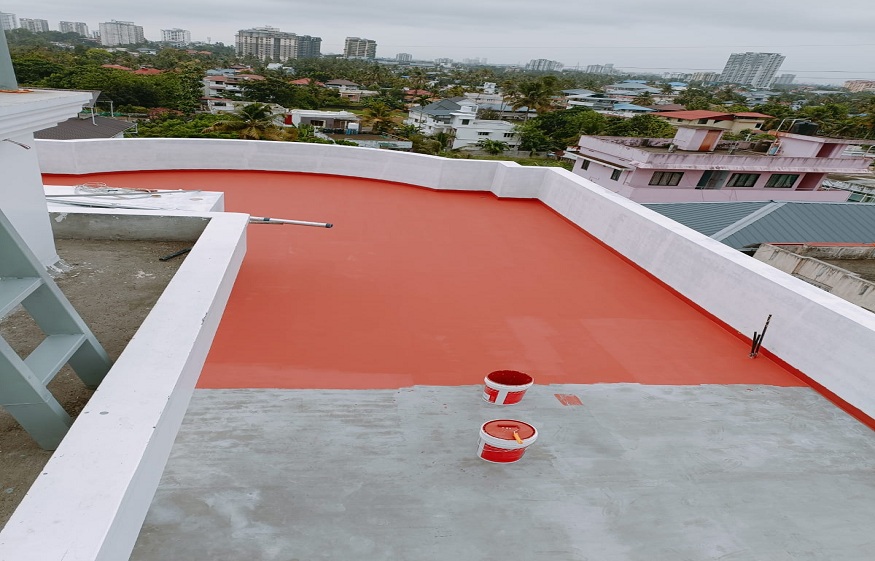One of the places in a building that is most susceptible to water damage is the bathroom. Leaks, mold growth, and structural degradation can result from persistent moisture, poor plumbing, and inadequate sealing. A safe and long-lasting bathroom requires the use of appropriate waterproofing solutions. Whether there are small leaks or significant water damage, professional waterproofing experts can stop future expensive repairs and long-term degradation of your bathroom.
Knowing Where Bathroom Leaks Come From
There are several reasons why bathrooms leak, some of which include:
Damaged Tile Sealing: Water can seep into walls and floors through broken or inadequately sealed tiles.
Pipe and Fixture Failure: Recurrent moisture problems are caused by leaking pipes and malfunctioning fixtures.
Poor Drain: Water collects in inefficient drains, gradually weakening surfaces.
Absence of Waterproofing: In damp areas, inadequate sealing accelerates water infiltration.
The first step in avoiding long-term damage would be to apply the proper waterproofing solutions exactly where the leak occurs.
Effective Bathroom Waterproofing Methods
1. Bathroom Tile Waterproofing
Bathroom tiles are continuously wet, which leads to leaks and cracks. Among the effective tile waterproofing methods covered are the following:
Using grout sealers prevents moisture from soaking into grout lines.
Using Waterproof Membranes, a layer underneath tiles prevents water from leaking into the subfloor.
Changing damaged tiles stops additional deterioration brought on by water seeping in.
2. Using Waterproof Coatings to Fix Bathroom Leaks
Leaks in bathrooms can be permanently fixed with waterproof coatings. These coatings shield floors and walls against water damage by creating a barrier that is resistant to moisture. Popular choices include:
For damp spaces, cementitious waterproofing is a long-lasting and simple-to-apply coating.
Liquid membranes: An adaptable and smooth way to stop leaks in areas with high moisture content.
3. Enhancing Drainage Systems in Bathrooms
Water buildup from poor drainage eventually erodes walls and flooring. The following are some ways to enhance drainage:
When slope floors are installed, water is directed to drain straight into drains rather than collecting in corners.
Changing drain covers increases water flow efficiency and prevents clogs.
Installing drains as a secondary measure provides additional outlets for excess water.
4. Preventing Bathroom Moisture Buildup
Maintaining a healthy atmosphere requires addressing moisture buildup, a major contributor to mold growth. Strategies that work include:
Ventilation Systems: Putting in exhaust fans to get rid of extra moisture.
Anti-Mold Paints: Apply coatings resistant to mold to walls and ceilings.
Dehumidifiers: Controlling the amount of moisture in confined areas.
Waterproofing Contractors’ Function
Your bathroom will be adequately sealed against leaks and water damage if you hire experienced waterproofing specialists. Professionals in the field offer:
- Comprehensive Leak Assessments: Finding issues before they become more serious.
- Superior Waterproofing Materials: Choosing the best materials to protect over time.
- Tailored Solutions: Putting tactics appropriate for specific bathroom designs and usage into practice.
- Regulatory Compliance: Making sure waterproofing complies with building codes and industry requirements.
Selecting Top Waterproofing Options
Several factors influence the choice of waterproofing systems, including:
- Bathroom Usage: Longer-lasting waterproofing techniques are needed in bathrooms with much use.
- Climate: Additional moisture-resistant coatings are required in humid locations.
- Existing Damage: Whether repairs or full resealing is necessary depends on the severity of the leaks.
Typical choices for waterproofing include:
Bituminous Coatings: Perfect for bathrooms that see a lot of water.
Tile joints are strengthened, and water seepage is stopped with epoxy sealants.
Acrylic waterproofing provides an affordable and adaptable moisture barrier.
Other Advantages of Waterproofing Bathrooms
In addition to stopping leaks, proper waterproofing offers other advantages like:
Preventing mold and mildew keeps bathrooms clean and free of dangerous fungus growth.
Extended Fixture Lifespan: Prevents water damage to flooring, sinks, and bathtubs.
Improved Aesthetic Appeal: Preserves bathroom interior beauty by removing unattractive water stains.
Enhanced Property Value: A home’s market appeal and resale value are raised by well-kept bathrooms.

